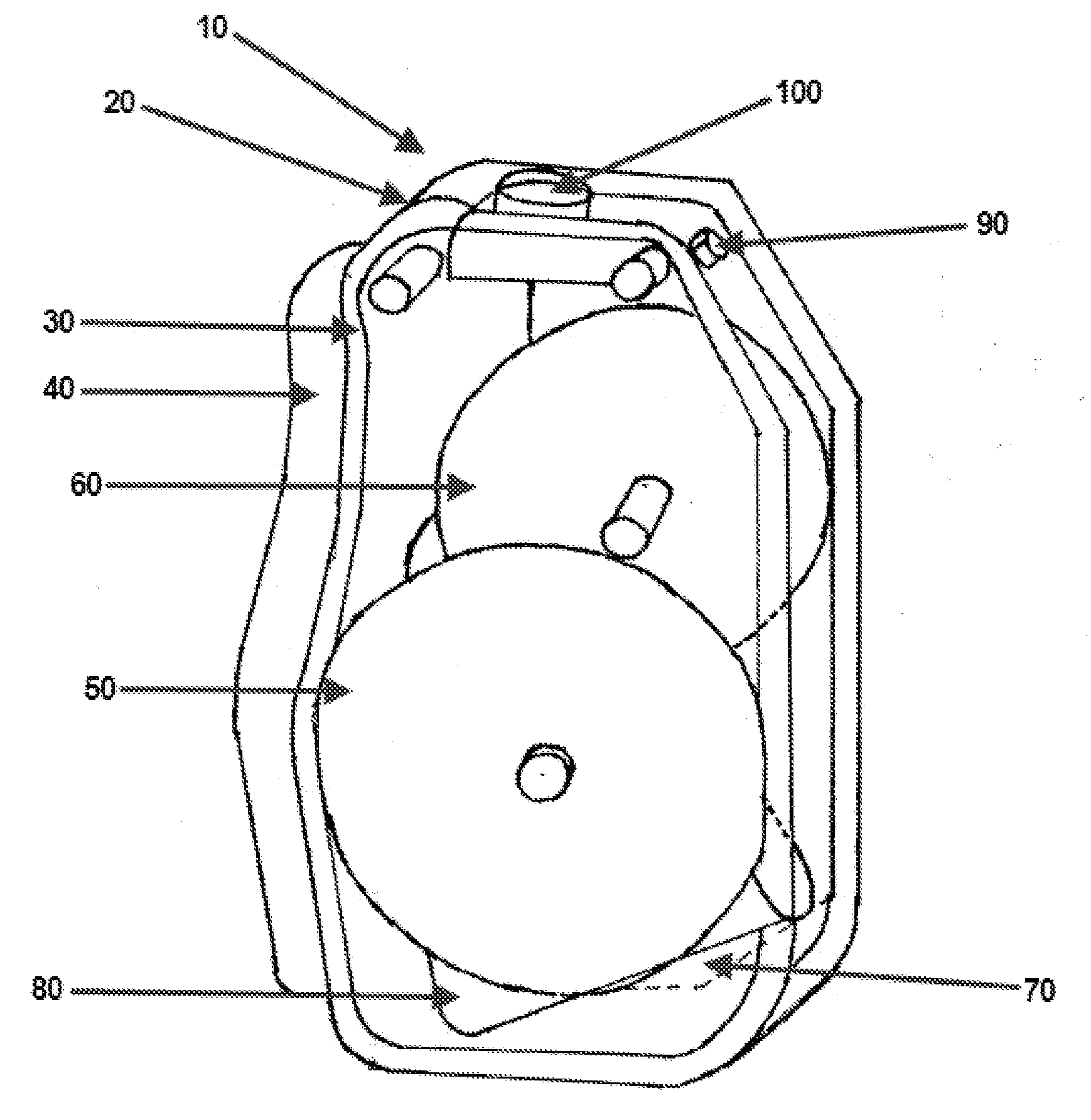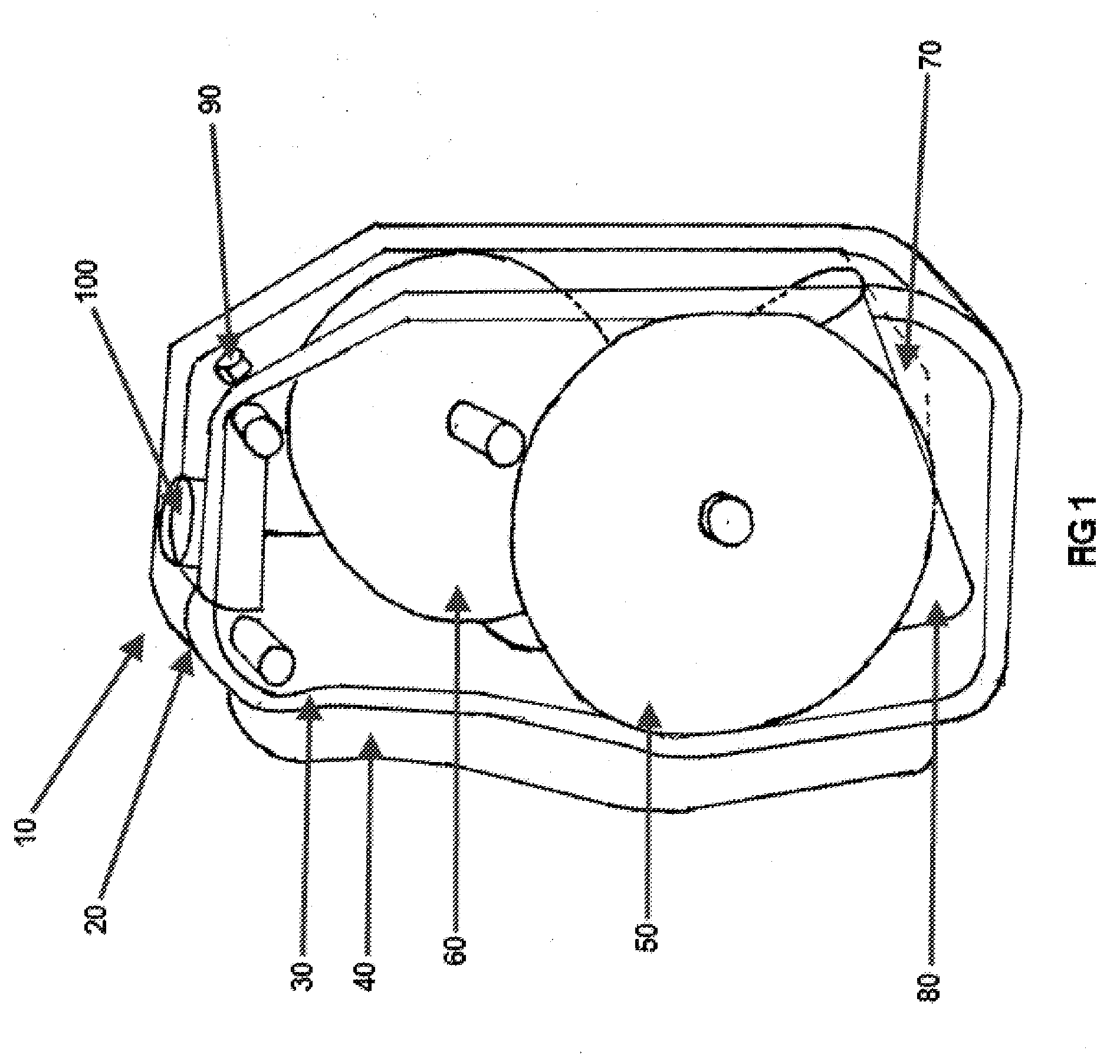Fuelless Lifelong Cigarette Lighter
a life-long, cigarette lighter technology, applied in the direction of incandescent ignition, combustion process, lighting and heating apparatus, etc., can solve the problems of heavy lighters, inconvenient use, and ineffective flint-based spark-producing means
- Summary
- Abstract
- Description
- Claims
- Application Information
AI Technical Summary
Benefits of technology
Problems solved by technology
Method used
Image
Examples
Embodiment Construction
[0023]The present disclosure is directed towards a fuel-less and battery-less lighter assembly 10, as shown in FIG. 1. The fuel-less and battery-less lighter assembly 10 includes a housing 20 having a body and plurality of outer faces. A recess 30 is disposed on one of its outer faces. The recess 30 partially and removably receives a handle 40. The handle 40 may be spring loaded and removably attached with the housing 20 such that, when squeezed, the handle 40 exerts inward force from outside of the housing 20.
[0024]A set of gears 50 fixedly mounted within the housing 20, juxtaposed with the handle 40; the gear set 50 receiving and converting the inward force exerted by the handle 40 into kinetic energy.
[0025]A micro generator 60 is fixedly mounted within the housing 20, the micro generator 60 is disposed adjacent to said gear set 50 and connected therewith; the micro generator 60 converts the kinetic energy from the gear set 50 into electrical energy. A circuit board 70 is fixedly ...
PUM
 Login to View More
Login to View More Abstract
Description
Claims
Application Information
 Login to View More
Login to View More - R&D
- Intellectual Property
- Life Sciences
- Materials
- Tech Scout
- Unparalleled Data Quality
- Higher Quality Content
- 60% Fewer Hallucinations
Browse by: Latest US Patents, China's latest patents, Technical Efficacy Thesaurus, Application Domain, Technology Topic, Popular Technical Reports.
© 2025 PatSnap. All rights reserved.Legal|Privacy policy|Modern Slavery Act Transparency Statement|Sitemap|About US| Contact US: help@patsnap.com



